12 Invasive Plants That You Should Rip Out of Your Garden Immediately
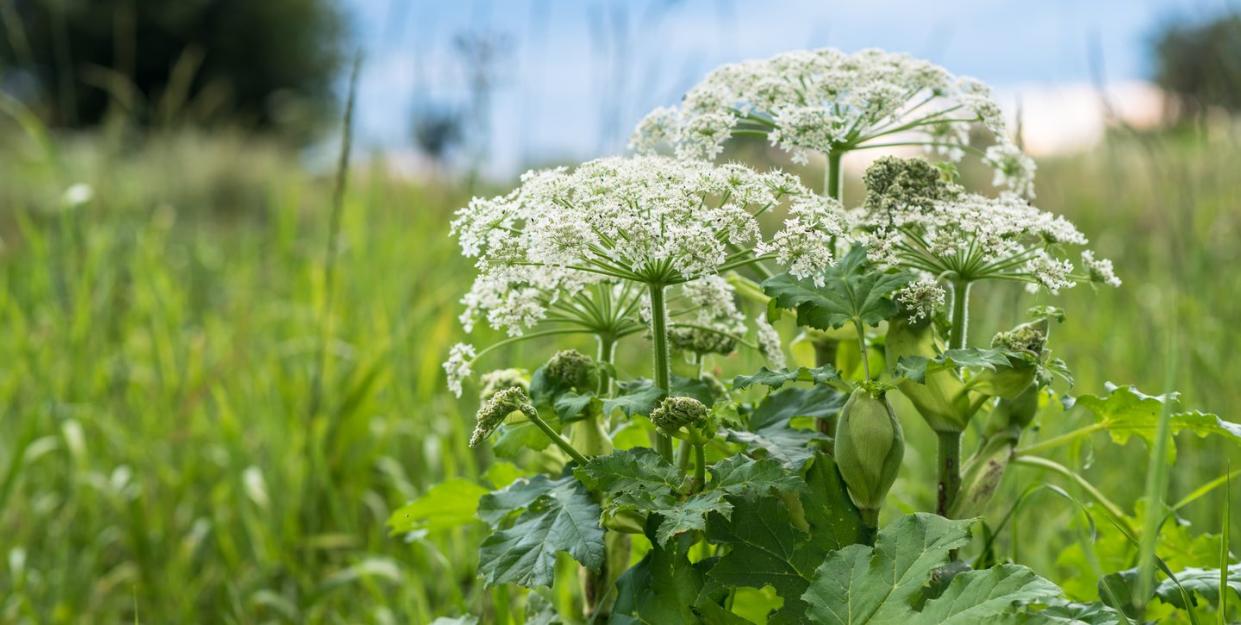
We love plants, but there are some that definitely don’t belong in your yard or garden. Yup, we're talking about invasive plants, those that are not native to the eco-system. Some of these plants were introduced into the United States accidentally via imported agricultural products. Others were brought here intentionally because they were considered ornamental before their aggressive growth patterns were discovered. You'll even find some invasive plants still sold online or at garden centers.
Invasive plants are the bullies of the garden; they take over, are terrible at sharing, and won't make room for their neighbors. They spread rapidly because they produce large amounts of seed, which is often distributed by birds, animals, wind or, unknowingly, by people. Their roots tend to smother native plants, and they're very good at re-sprouting when cut back. It's not just other plants and flowers that can be muscled out by invasive plants. When invasive plants overtake an area, the natural diversity and balance of the eco-system is upset, providing less food for native wildlife such as beneficial insects and birds. Many invasive plants are harmful to pets and people, too.
Sometimes, you can remove invasive plants, such as mimosa tree, yourself. But others, such as giant hogweed, are too dangerous to tackle alone. If you’re in doubt about the identity of a plant or aren't sure what to do about removing it, contact your local university coop extension service (find yours here), which can offer guidance about how to remove it safely and effectively.
Ahead, a dirty dozen of invasive plants that should be removed from your garden immediately:
Giant Hogweed (Heracleum mantegazzianum)
What it looks like: Large plants that reach 15 to 20 feet tall at maturity, these have leaves that are up to 5 feet wide and thick stems with lacy, white umbrella-shaped flowers
This is the most dangerous invasive plant on the list. Introduced in the early 1900s as an ornamental, it has spread rapidly across the country, pushing out native species.
It also threatens people: Giant hogweed sap contains chemicals called furocoumarins in all parts of the plant. When the sap contacts skin and is exposed to sunlight, severe skin inflammation and painful blisters erupt within 48 hours. The blisters last for months, and skin may develop long-term sensitivity to sunlight.
Removal: For reasons that are obvious if you read the above, this is not a plant you should attempt to remove yourself; contact your local university county coop for assistance.
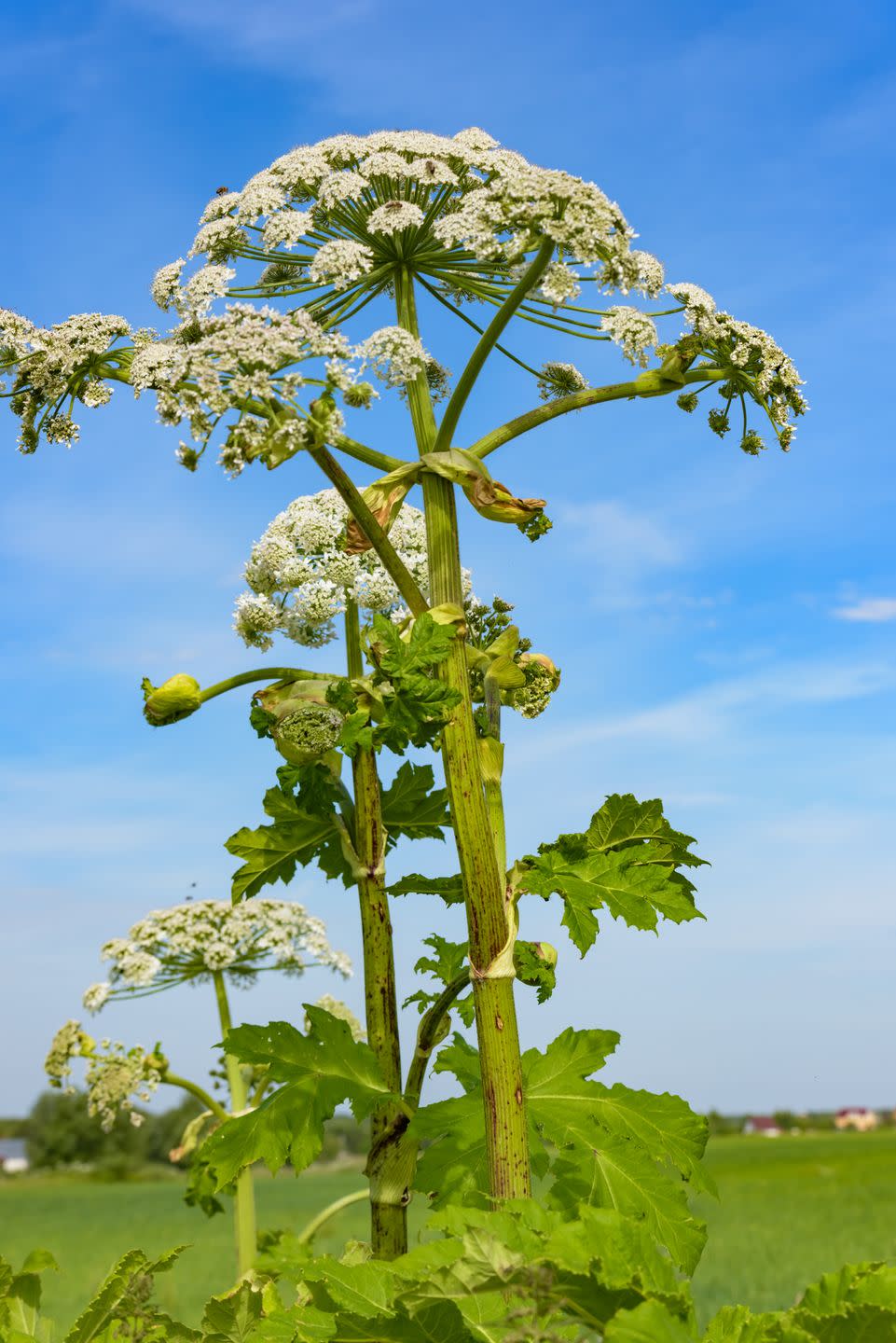
Mimosa Tree (Albizia julibrissin)
What it looks like: With fern-like foliage and feathery plumed pink flowers that attract pollinators, this plant is especially common in the South.
Also known as silk tree, this invasive plant was introduced as an ornamental from Asia in the 1700s. It’s an aggressive grower that outcompetes most native plants, such as those that host caterpillars which native songbirds feed their babies. The seeds also contain a neurotoxin that is toxic to dogs.
Removal: Cut it down at ground level; repeat if it resprouts. Pull seedlings by hand.
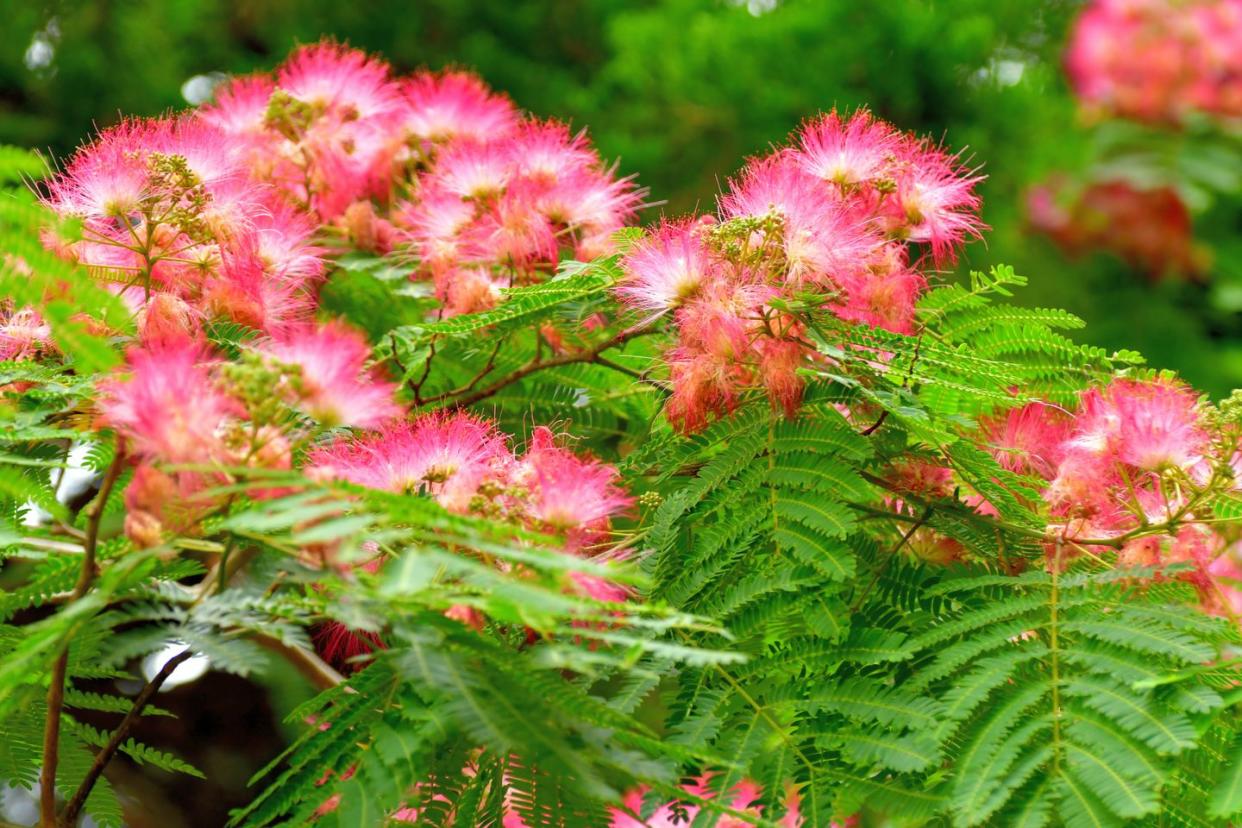
Chinese Wisteria (Wisteria sinensis)
What it looks like: This woody vine twines around trees and produces bunches of pretty lavender flowers in spring
Introduced in the early 1900s as an ornamental, this vine will cut through bark and choke out trees. The stunning flowers are lovely, but wisteria can quickly take over an area and kill native species. The species Wisteria frutescens, which is native and not invasive, is just as beautiful as this invasive type, so if you love the look of wisteria, be sure to seek out that variety.
Removal: Cut vines down, but be aware that long-term control may require other methods such as herbicides, which make calling in an expert a good idea.
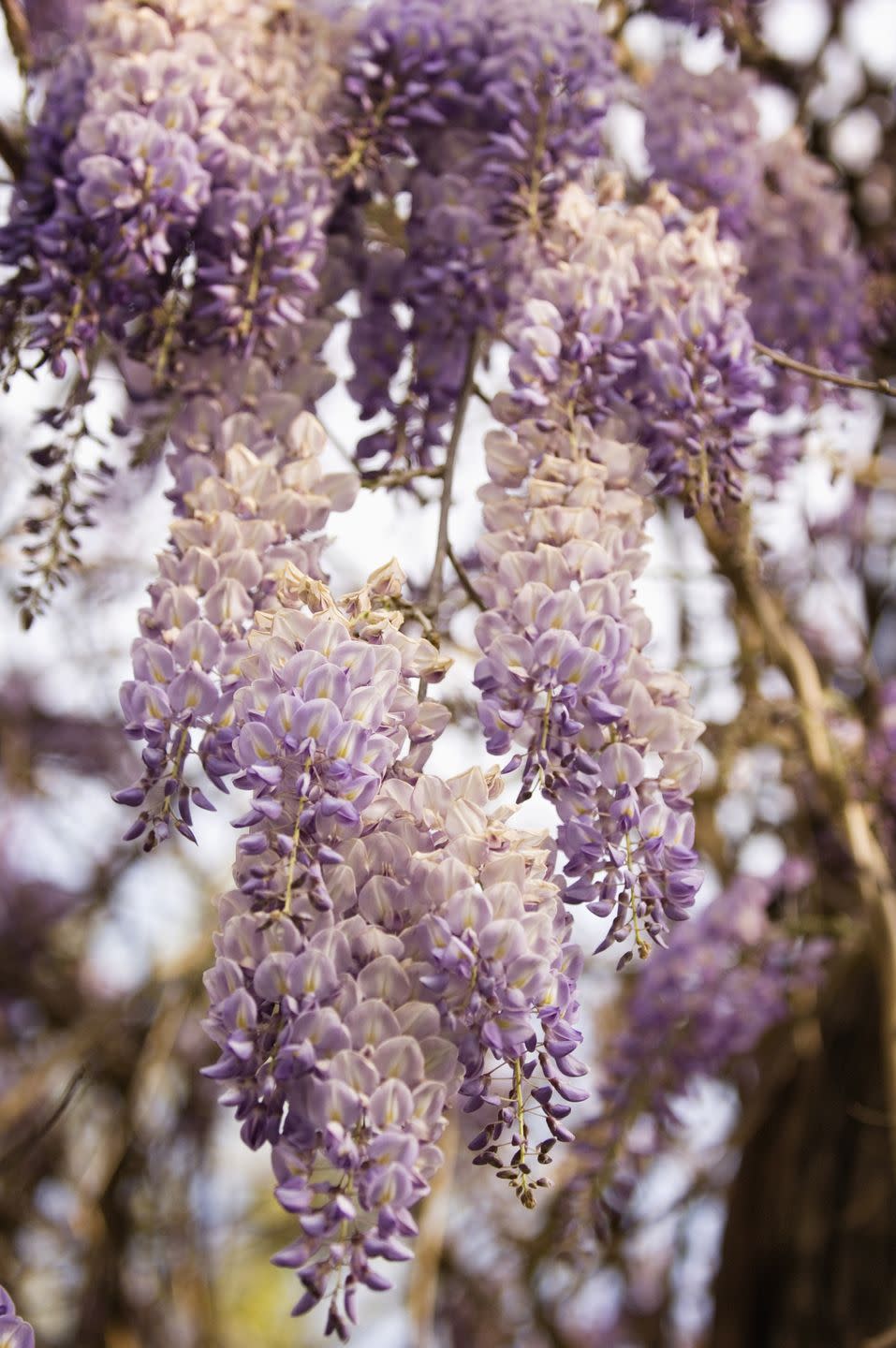
Lily of the Valley (Convallaria majalis)
What it looks like: This plant features tiny sword-shaped leaves with dainty, fragrant bell-like flowers that bloom in late spring
Lily of the valley is sought after for bridal bouquets. But the downside is that the plant spreads rapidly by seeds and rhizomes, or underground stems, so it can form extensive colonies. Some states, such as Wisconsin, define it as invasive because it spreads so aggressively and overcomes native ground covers.
Removal: Dig up the rhizomes and discard, but be sure to remove even the tiniest fragments, which can yield new plants; you may need to dig it up several times to remove all traces. Or, mow to prevent seeds from forming.
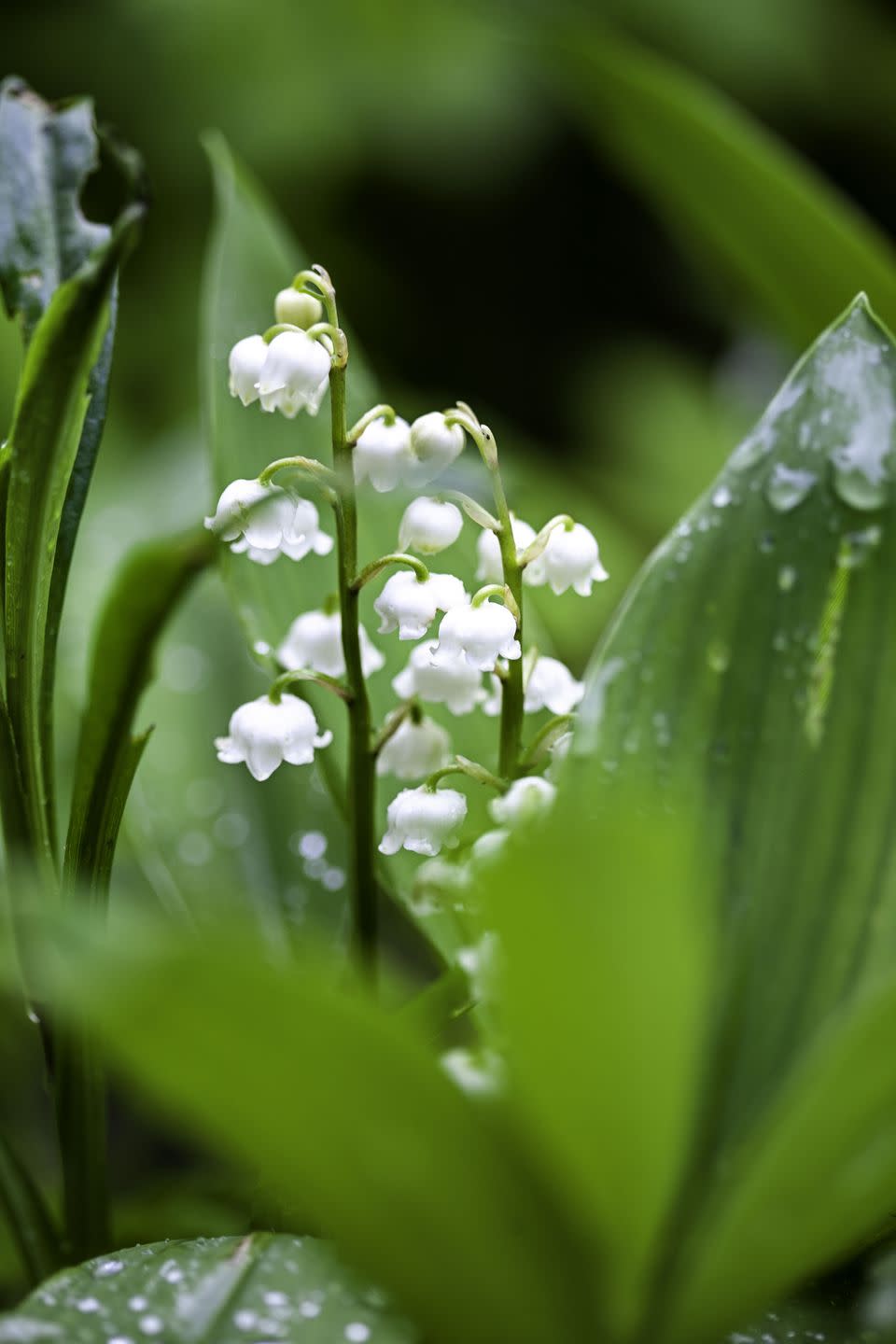
Tree of Heaven (Ailanthus altissima)
What it looks like: This invasive plant is actually a small tree with large compound leaves and serrated edges. it produces clusters of yellow flowers in spring and winged fruits
Introduced from China in the 1700s, this tree forms dense thickets that displace native species. Because it doesn’t mind poor soils, it grows everywhere, even in the cracks of pavement. The leaves smell horrible when crushed. It also secretes a chemical that is toxic to plants growing nearby. Finally, it's a host plant for another destructive and invasive species, the spotted lanternfly.
Removal: Pull up seedlings. For older trees, control will need to be multi-pronged because cutting only stimulates it to re-sprout even more vigorously.
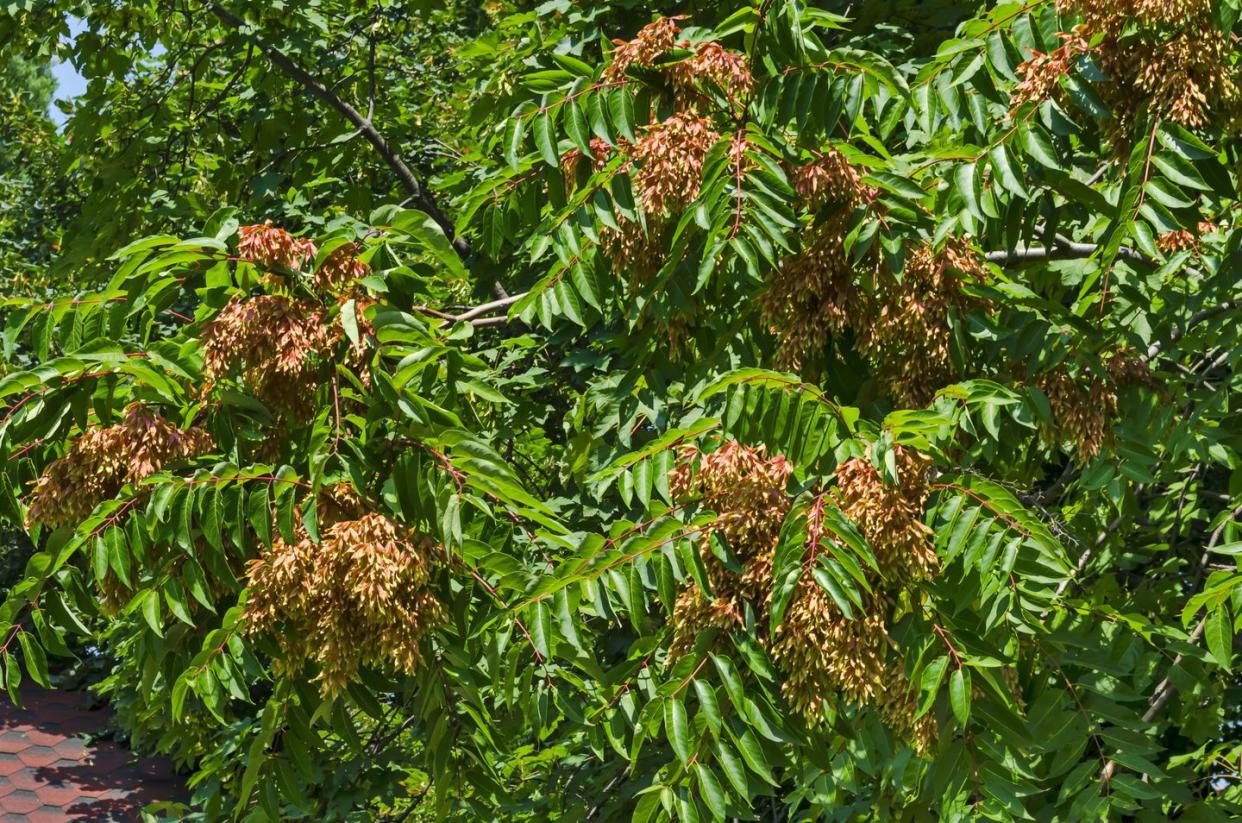
Norway Maple (Acer platanoides)
What it looks like: This varietal has typical maple-shaped leaves with silvery, deeply-grooved bark
Introduced from Europe in the 1750s, this maple was overplanted as a shade tree because it grows so quickly. However, it produces a large number of winged seeds, so it spreads rapidly and is considered invasive in some areas, outcompeting native trees such as sugar maples. Despite that fact, you'll still occasionally see it sold at nurseries—buyer, beware!
Removal: In the first place, don't plant this if you're shopping for a shade tree. If that news is coming too late to heed, know that seedlings can be pulled by hand, but large trees must be removed by professionals.
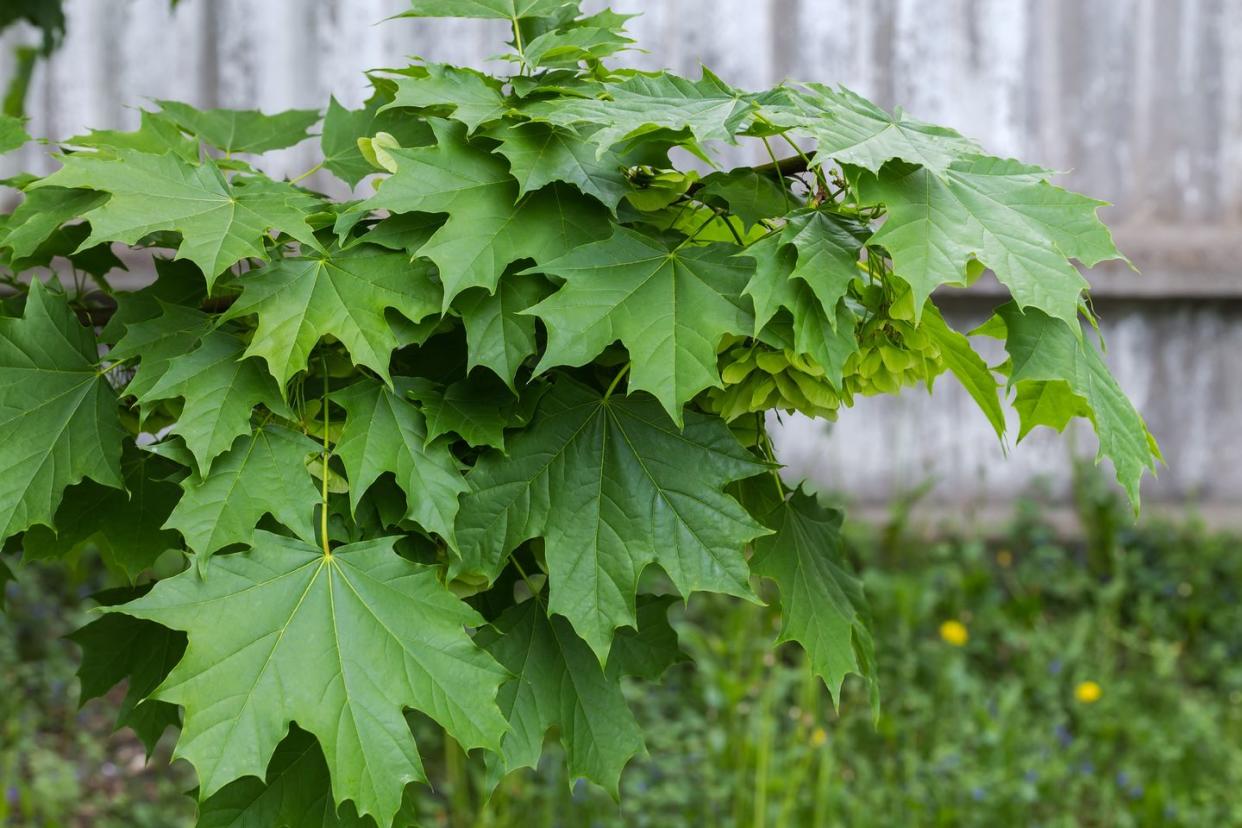
Japanese Honeysuckle (Lonicera japonica)
What it looks like: A woody vine with showy, fragrant yellow-white flowers that attract pollinators
Introduced as an ornamental in the 1800s, this vine crowds out native plants. It grows everywhere and is spread easily by birds who eat the seeds. Non-invasive types, such as coral or trumpet honeysuckle (Lonicera sempervirens), are good alternatives if you have your heart set on a honeysuckle vine.
Removal: Hand-pulling or mowing. Other control methods may be necessary if it’s a large, established vine.
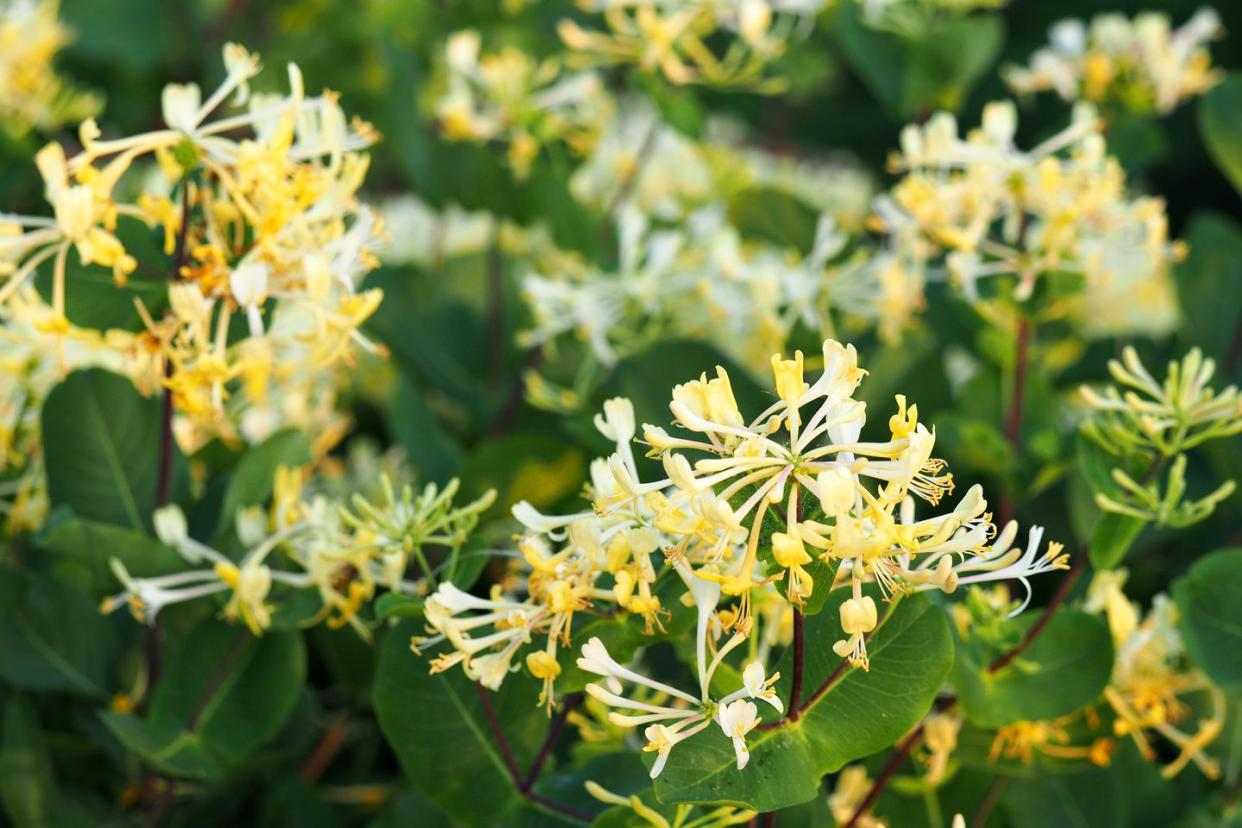
English Ivy (Hedera helix)
What it looks like: This ground cover has lobed or spade-shaped leaves; it will also climb rapidly up trees or walls
We hate to disappoint you if you have visions of an ivy-covered wall, but English ivy is an invasive plant brought over from Europe in the 1700s. This fast grower will shade out other native groundcovers, which are a food source to wildlife, and strangle or topple trees. Keep this as a houseplant if you like its look, but don't plant it up against structures, which can be damaged by its aggressive growth.
Removal: Pull by hand, and snip vines at base of trees; dispose of the vine in your trash, not in compost.
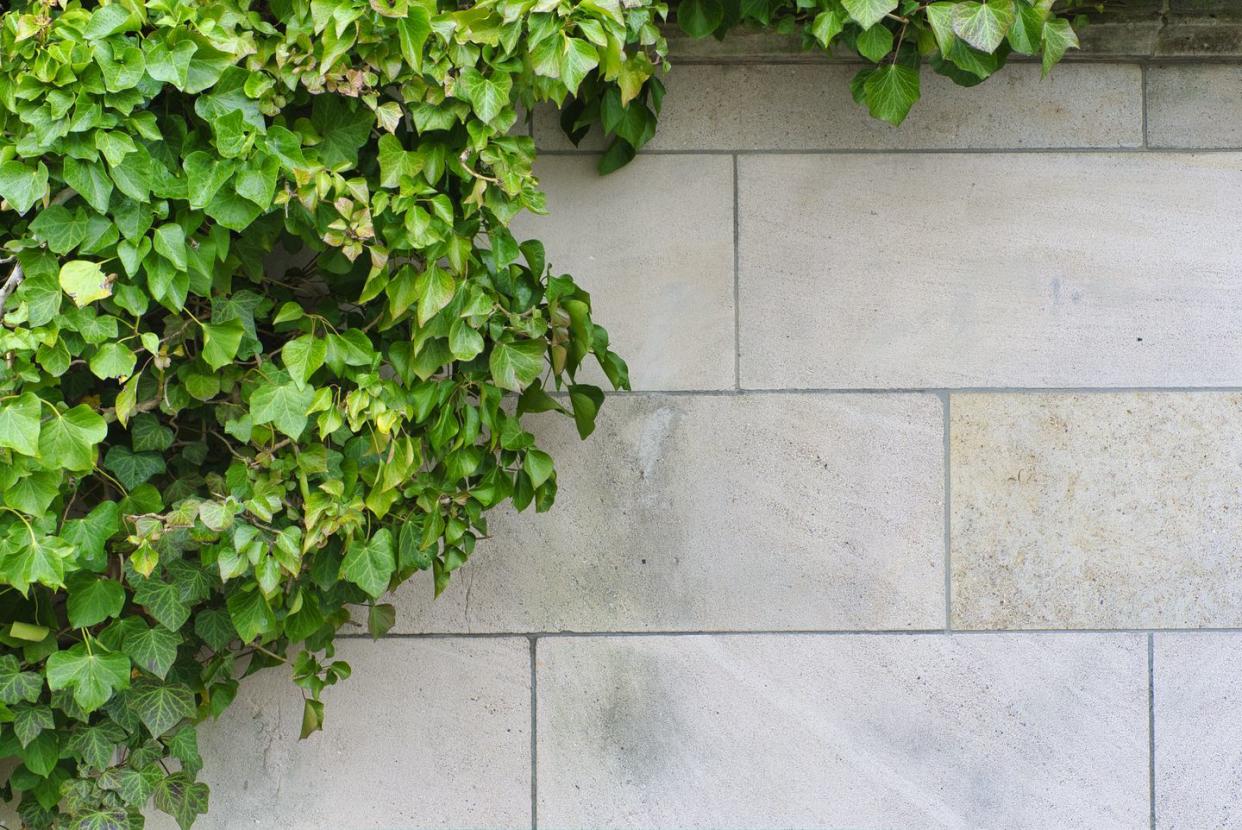
Orange Daylily (Hemerocallis fulva)
What it looks like: Bright orange daylilies often grows alongside roads and meadows or near old home sites
Sometimes called “ditch lily” because that’s where you’ll often find it growing, this pretty bright orange lily is invasive. It was introduced in the 1900s as an ornamental, but it has since become a threat to other native plants because its thick tubers spread rapidly. If you love daylilies, plant other hybrid or cultivated varieties of daylilies, which are better behaved, rather than this common orange type.
Removal: Dig up the entire tuber and root system.
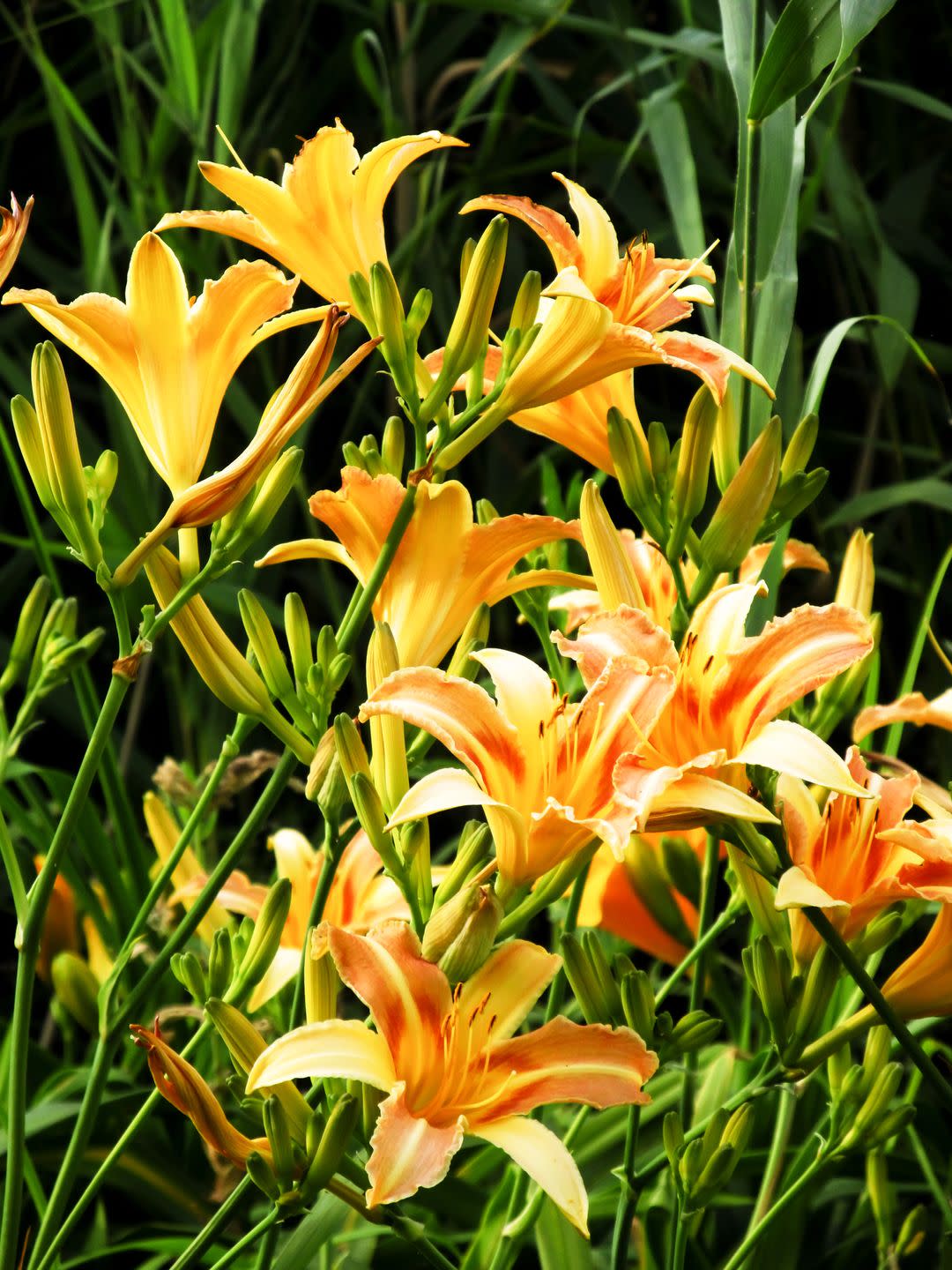
Bradford Pear (Pyrus calleryana)
What it looks like: An oval-shaped deciduous small tree with white spring flowers
Once the darling of landscapers everywhere because of its rapid growth and spring flowers, this tree has fallen out of favor. It’s invasive, has smelly flowers that reek like rotting fish, and weak wood that splits easily. If you're looking for spring bloomers, better alternatives include native dogwoods or flowering crabapple.
Removal: Cut it down, and plant native trees for spring color.
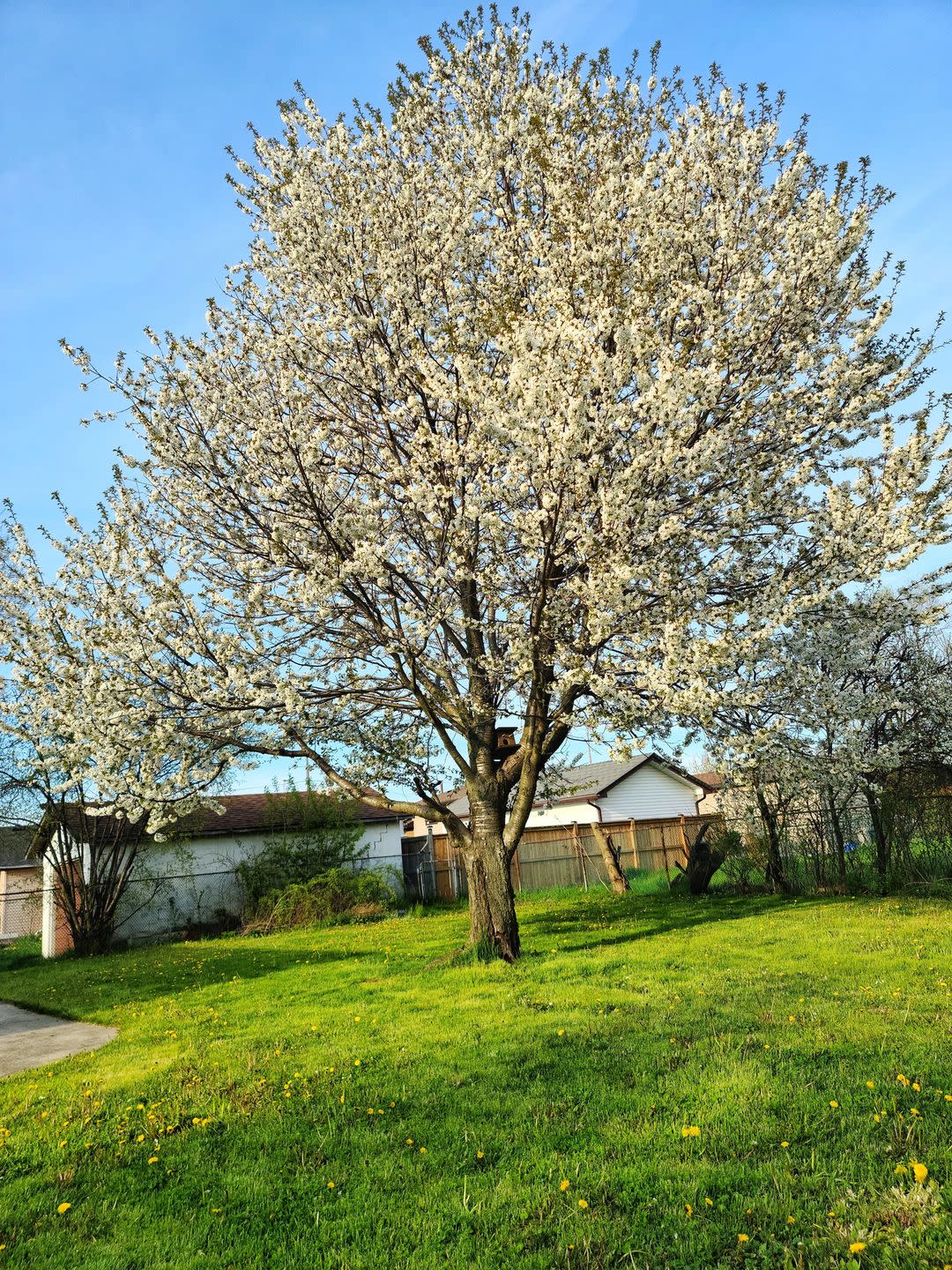
Japanese Barberry (Berberis thunbergii)
What it looks like: These rounded bushes have small oval leaves that may be red, green, or burgundy with sharp spines
Like so many others, this plant was introduced in the 1800s as an ornamental, but it escaped managed care and is now naturalized. It can take over woodland settings, crowding out native plants. Research has shown black-legged ticks, which transmit Lyme disease, increase in areas of dense barberry stands.
Removal: This can be hand-pulled or dug out (wear gloves!), but other control methods may be needed for follow up treatment.
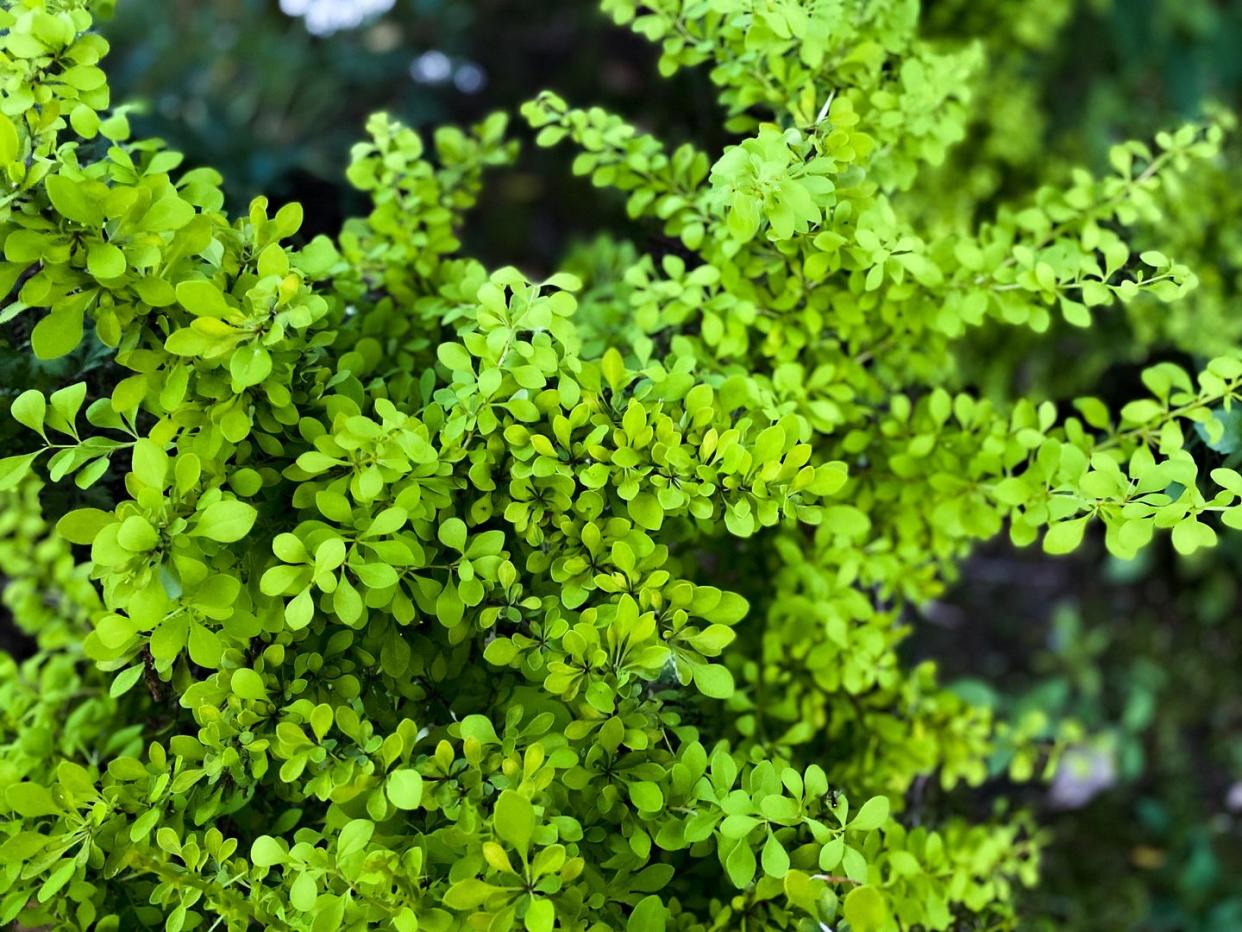
Poison Hemlock (Conium maculatum)
What it looks like: It has stout stems with purple spots, small white flowers in umbrella-shaped clusters, and fern-like leaves. Hemlock reaches 3 to 10 feet tall by its second year.
This plant, which was introduced as an ornamental plant in the 1800s, is a biennial that spreads by seed. All parts of the plant are toxic to people and animals because it contains alkaloid compounds which can be fatal if ingested. (People have accidentally eaten it thinking it was wild carrot or parsnip.) The sap is also a skin irritant or respiratory irritant for some people.
Removal: Small stands can be removed by digging, but be sure to wear gloves and dispose of these plants (don’t compost). Control takes several years. For larger stands, this is not a plant you should attempt to remove yourself; contact your local university county coop for assistance
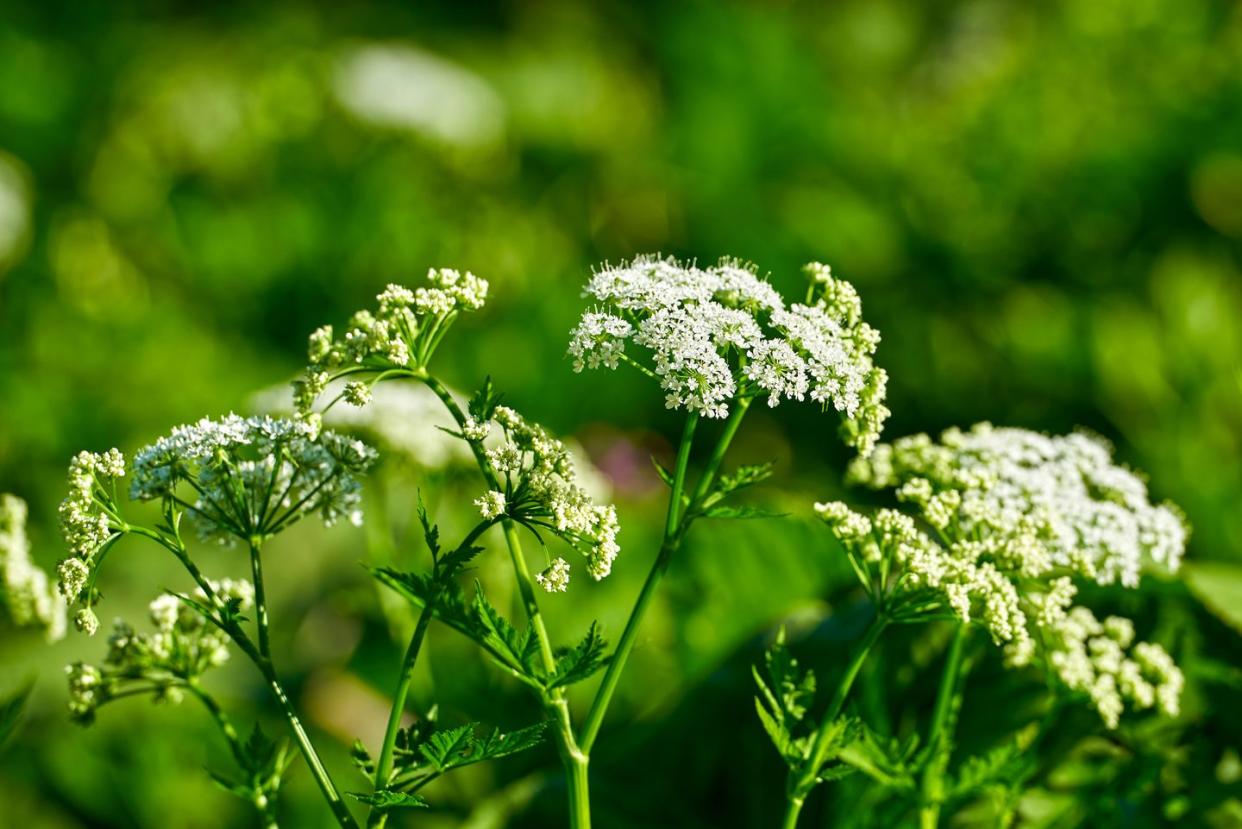
You Might Also Like
